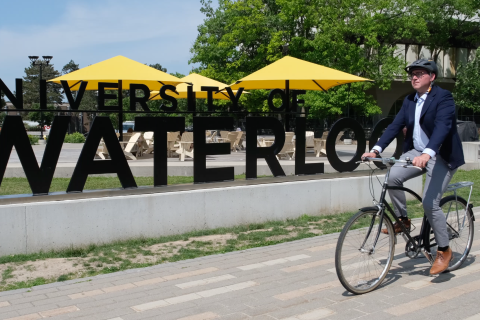Message from ...
Canada
More bikes than people
When I relocated to the Netherlands in 2004 it was the first time that I had bought a bike. Cycling was basically the easiest way to get around. In the Netherlands, our family had more bikes than people: before she was one my daughter was already riding with me on my bike and by the time she was two she was exploring the neighbourhood in her walker. When I moved back to Canada in 2017 it was the first time that I bought a car. That sums up the difference between the two countries pretty well.
It feels good to cycle along routes that I myself have had a hand in developing
Even though I worked in the field of Urban Geography at Utrecht University, at that time I had never thought about cycling from an academic perspective. On my return to Canada , given my experience in the Netherlands, I more or less automatically became an advocate of cycling. I took part in public debates around cycling, I became a member of a committee on the subject within the local authority and became passionate about the subject.
I now see the benefits that this has brought. There are a lot more cycle paths here now and the local authority is increasingly aware of the need to create better facilities for cyclists. Shortly after we moved back to Canada my son was born. He is now five and has been cycling on his own bike since the summer. It feels great to cycle through the city with my children along cycle paths that I myself have had a hand in developing!
My interest in cycling has also impacted on my academic work. In 2022 I was awarded an Insight Development Grant from the Canadian government. I used this to set up the research project Everybody Bikes. The focus of this project is people like me who have lived in both Canada and the Netherlands. We have interviewed more than fifty people to find out their thoughts on cycling in both countries. The plan is to use this knowledge to make things better for cyclists in Canadian cities. Cycling infrastructure is important. But if we also understand better the influence of culture, contact and lifestyle from people’s own perspective, then we can learn from this to make improvements here.

Brian Doucet
Brian Doucet comes from Toronto. He lived, studied and worked in the Netherlands between 2004 and 2017 and graduated from Utrecht University with a Master’s in Human Geography and Planning and a PhD in Urban Geography. He currently holds the Canada Research Chair in Urban Change and Social Inclusion and is Associate Professor at the School of Planning of the University of Waterloo in Canada. Everybody Bikes is one of the research projects that he is currently leading.

